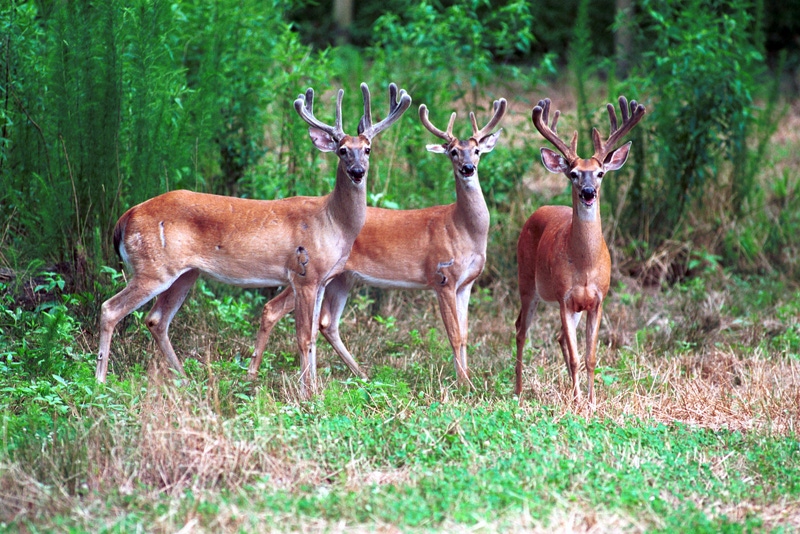August 31, 2011

Natural deer food may be in short supply this year because drought is causing acorns to drop early, and hogs are competing for them.
That’s the word from LSU AgCenter wildlife specialist Don Reed, who talked about establishing and maintaining food plots and managing and enhancing native browse plants for deer at a, Aug. 22 deer management meeting.
What you plant has to be palatable, Reed said, adding that the moisture content is important in taste.
Cowpeas, a warm-season forage, are fairly drought-tolerant, and corn husks on the ground are still attractive to deer. “The best warm-season forage plant is soybeans, but you have to plant enough of it so they don’t eat it down.”
Sept. 1 is the time to plant cool-season food plots. A host of clovers can be planted, especially crimson clover because it offers some growth in the fall.
“Deer generally prefer legumes over grasses,” Reed said. “Among grasses, deer generally prefer are cereal grains such as oat, wheat and rye over ryegrass.”
Whatever is planted should be shorter than 5 feet tall or have fruits or nuts that drop to the ground to be of any value to a deer.
“What you plant is not as important as how you plant it. The best seed in the world will not do well in a poorly managed seed bed.”
Clovers and other legumes will not grow well in acid soils, and Reed recommended getting a soil test through the LSU AgCenter to be sure soil conditions are right.
In addition to deer management, Reed said a new law on feral hogs allows the use of any legal firearm at night from March through August. Anyone taking part in these activities at night is required to notify the parish sheriff’s office 24 hours in advance of any such hunt.
You May Also Like




